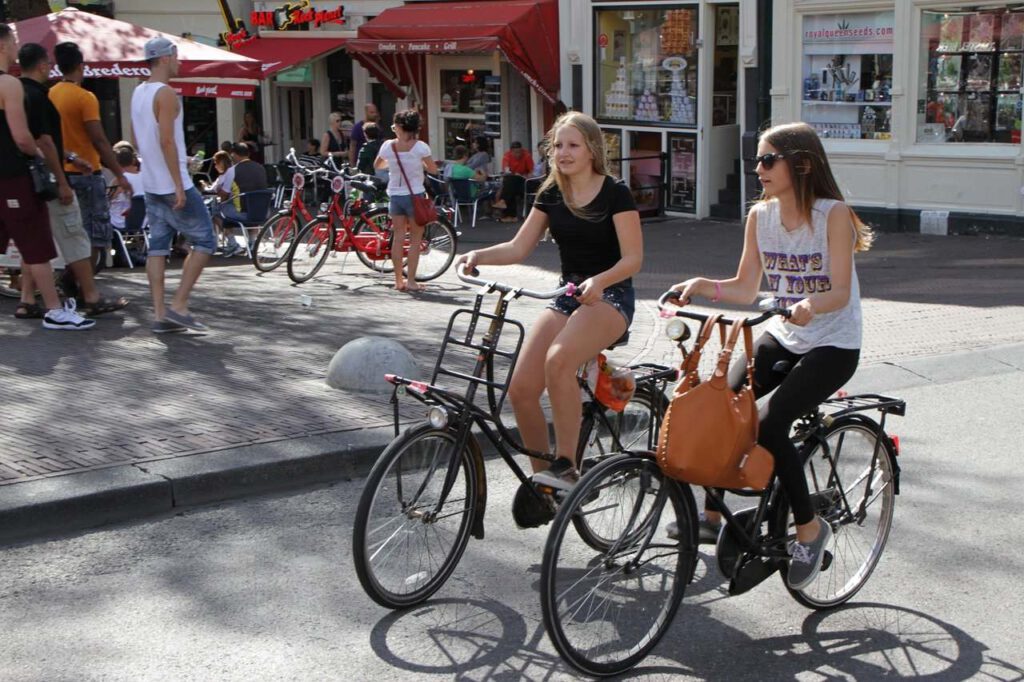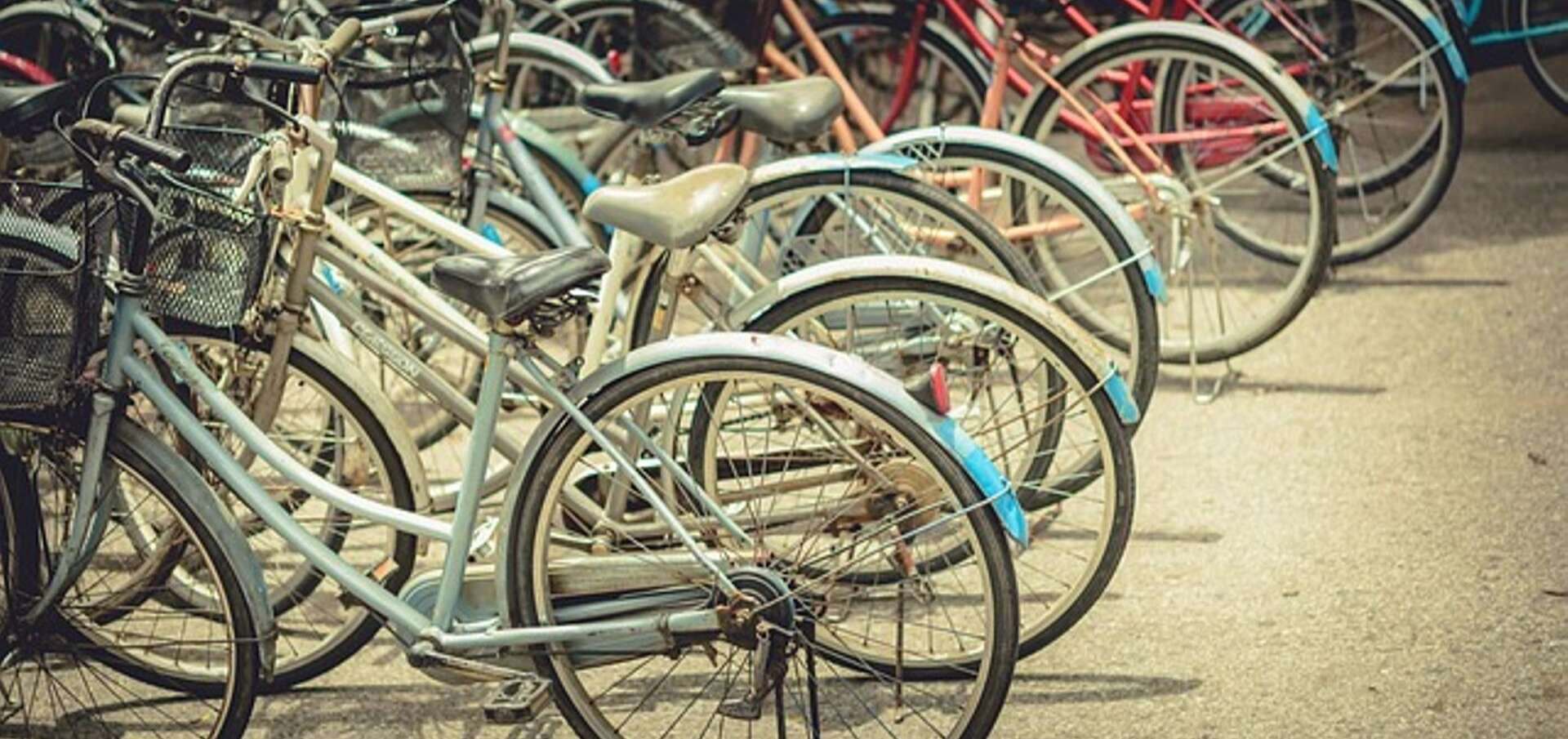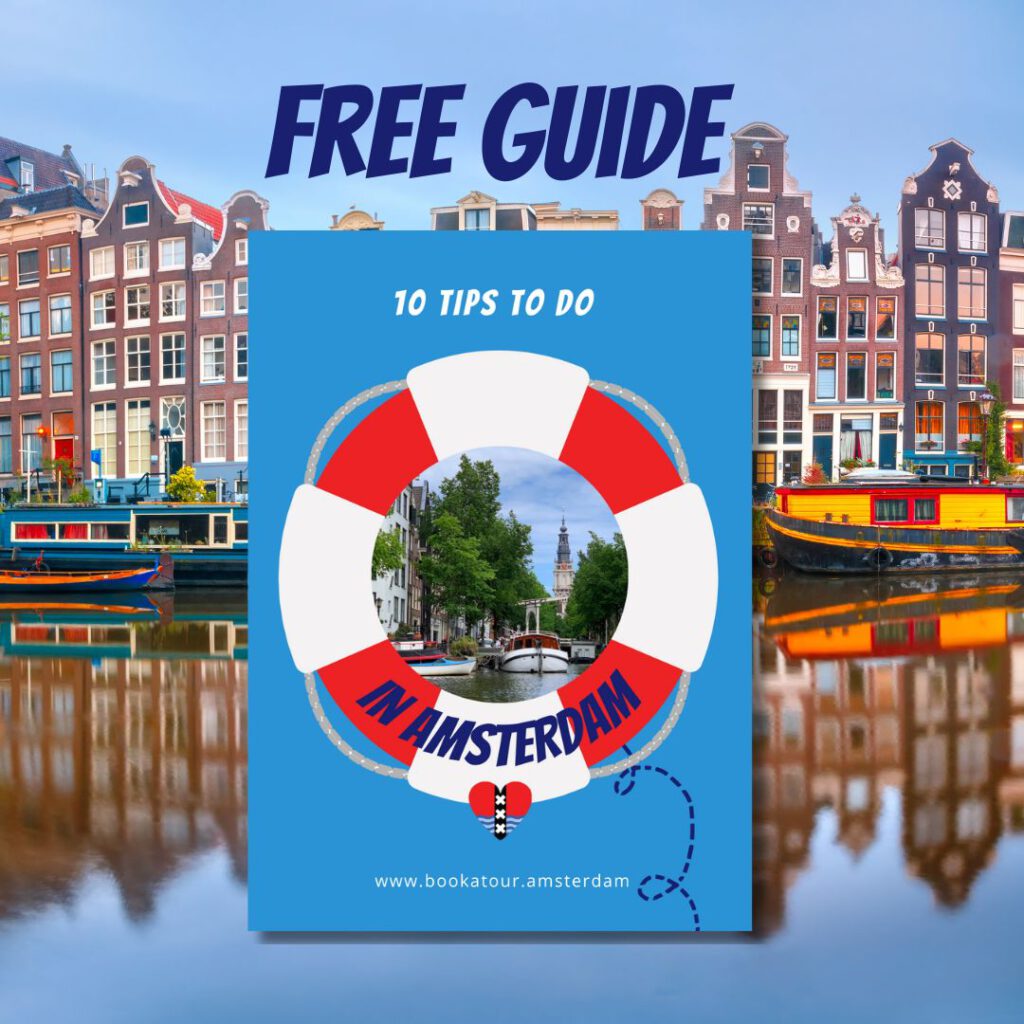There are more bikes in Amsterdam than people. No joke. We have no idea what all those extra bikes are for. Are people riding them two at a time? Is it the Dutch version of the mid-life crisis sports car in the garage? Or are those extra bikes mainly for tourists to risk their lives on?
It’s not exactly clear. Perhaps it’s a combination of all these things, along with all the bikes which live out their last days rusting away forlornly chained to bridges or gates by the side of the road.
Whatever the case, bicycles are as integral to the city’s scene as it’s canals. In many ways, more so. After all, far more people travel by bicycle daily than take to Amsterdam’s waterways. Nearly sixty percent of the city’s inhabitants get on the saddle every day! And that’s saying something in a city where it rains on average 15 days a month.

Was that always so?
No. Bicycles weren’t always a party of the city’s scene. In fact, there was a time when the car reigned supreme. There was even a plan in the 60s to pave over one of the iconic canals to make more space for the wheeled metal cans. Thankfully, that plan got bogged down in committees and local government and ultimately ended up going nowhere. So, two cheers for bureaucracy! (Do you think that’s the first time anybody ever wrote that?)
As other cities are now showing, to make the bicycle a mainstay of a city’s transportation scene take government and city planning. To be fair, it helps that Amsterdam is both densely populated and flat, as that means you can get where you’re going without having the physique of a marathon runner.
But that doesn’t change the basics. If it wasn’t for the more than 500 kilometers of bicycle paths throughout the city, the bicycle wouldn’t be quite as popular. For though this machine is great for the environment, your condition and convenient besides, nobody wants to run the risk of dying every time they go to the corner shop! So, having the right infrastructure is hugely important.
Fortunately, the city has invested heavily in this regard. Even going so far as to make it hard for cars to even enter the city center!
Accidents on the rise
Nor is it a matter of building it and they will come. It requires the government to constantly rethink matters. For example, currently the city (and country) is going through a bit of a crisis. Deadly bicycle accidents surpassed deadly car deaths for the first time last year. The main reason? Technology. More specifically, the e-bike.
Yes, that does make it sound like a virtual bicycle. And yes, we agree it would be awesome if you could upload and download bicycles. But we’re not there yet. Instead, the ‘e’ stands for the more mundane ‘electric’. As in, it’s no longer muscle power alone which pushes you forward. That means these bikes can go faster and – more importantly – people who formerly couldn’t use the bicycle anymore, like the elderly, can get on them again.
And that’s great, of course. Anything to give people back their mobility. But it does mean this demographic rides a lot more kilometers which increases the risk of accidents (though the accident rate per kilometer traveled is still dropping, so it’s not all bad).
Something that might also be contributing to accidents is the rules. Or rather, the way dutch cyclists feel they’re beneath them.
Organized chaos
That’s something to consider if you’re coming here as a tourist and you’re planning to rent a bike. You might want to practice a bit at home. You see, though there are numerous laws concerning bicycles – like don’t run a red light and such – if you actually obey them, you’re likely to get yelled at by other bicyclists for being so reckless.
In their stead, we have a bunch of unwritten rules. And you don’t really want to be learning those even as you’re trying to figure out which way those damned pedals are supposed to spin!
The first time you get on a bike in Amsterdam will probably be pretty stressful as people wiz by close enough they can pat you on the shoulder and blatantly ignore rules, traffic signs and your obvious discomfort. Madly ringing their bell and tutting as they do so.
The good news? Though it might seem like utter chaos, there is some logic to it. Mainly, it consists of eye contact, keeping track of each other, reading body language to know where people are going, and realizing when another road user won’t be able to see you. You’ll figure all that out soon enough. But be aware that it will require some work.
And then there’s the biggest danger of them all! Is it the cars? The canals? The coffeeshops? No, it’s the tram tracks. They’ve cut more than one bicycle’s journey short rather abruptly (and led to a cyclist doing an unexpected imitation of superman). We suspect that there isn’t one Amsterdam who has not had a first-hand encounter with those tracks and end up meeting pavement because of it. So be careful to not get your wheel stuck in one of those silver deathtraps! The trick is to hit them at an angle. That’s the way you’ll best avoid your wheel slipping inside the track.
Bicycle graveyard
“But you’re a boat company”, some of you mutter, “Why are you writing about bicycles? How often do two wheelers and the canals really intersect?” More often than you may think. Here’s an interesting statistic for you. Every year, the Dutch authorities take out between 12 and 15 thousand bicycles from the canals. Yes, you read that correctly, ‘every year’ and ‘thousand’.
For them to take out that many, people have to be throwing bikes into the water at a rate of about 33 a day! We have no idea when they do it, these bike throwers. Or who they are, for that matter. We don’t actually see it happen despite our constant presence on the canals. The authorities suspect the main culprit is theft or vandalism. Though why you’d first go through the trouble of stealing a bike to then throw it into the water is a bit of a mystery to us as well.
Whatever the reason and whoever the culprit, it’s quite a chore to fish all those bikes out of the water. They have to take big barges up and down the canals and fish for these former vehicles. But if they don’t, then they risk the safety of the city’s inhabitants. After all, plenty of people fall in the canals as well. And when that happens, the last thing you want is for a pile of bicycles to break your fall.
There is a bright side to all these bicycle rescues. It leads to a lot of recycled metal, with vessels full of algae-covered bicycles regularly dropping off what they’ve collected at the scrap metal yard.
Of course, that does beg the question: How much of the metal has been fished out of the canals several times? After all, some of that metal ends up being recycled into new bikes. So it’s entirely possible some has been collected and then thrown in repeatedly. Oh, what stories some of these cast of bikes could tell!
Though perhaps it might not get much beyond ‘blub, blub’.



